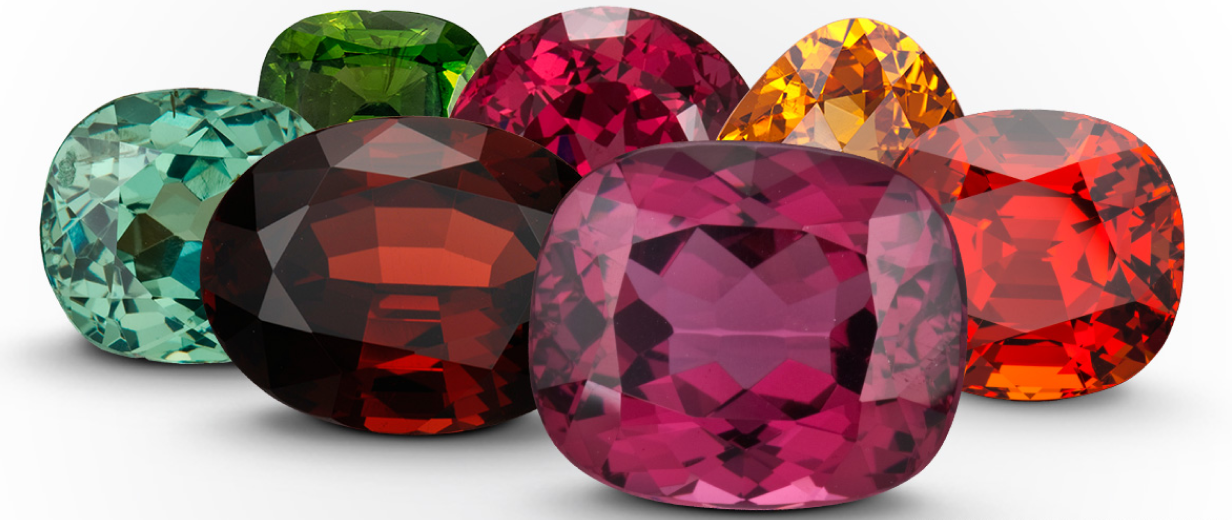January's Birthstone| The Flaming Garnet

As we embark on a new year, this vibrant gemstone takes centre stage, symbolising the fresh beginnings of those born in January. Often recognised for its captivating red shade similar to a pomegranate, garnet surprises with its spectrum of colours, offering an array of options.
Let’s delve into the beauty, history and significance of this stunning gem, a perfect embodiment of the vibrant start to the year ahead.
Garnet's Meaning & History
The word “garnet” comes from the 14th century Middle English word gernet, meaning “dark red”. This word is derived from Latin granatum, which means “seed”, and is called so because of the gemstone’s resemblance to the red seeds of pomegranate.
Used since ancient times, garnets were prized by Egyptian pharaohs and adorned Roman signet rings for sealing documents. Fashioned during the Victorian era, this stunning piece symbolises the enduring popularity and beauty of garnets, capturing their allure through centuries of history.




Where is it found?
Garnets, sourced from diverse regions globally, held prominence during the Victorian era with Bohemia (now Czech Republic) being a key supplier of the coveted red pyrope garnets. Presently, Africa, particularly Namibia for demantoids and Kenya, Tanzania, and Madagascar for vivid green tsavorites, serves as a major garnet source. Namibia and Tanzania also contribute rich orange-to-yellow spessartine garnets. Southern California's Little Three area historically produced these captivating gems. January's birthstone, garnet, extends its presence beyond Africa, found in Myanmar, Brazil, Iran, Afghanistan, Pakistan, India, Sri Lanka and several other countries.
Blood & Life Force: Garnet Symbolism
Throughout history, garnet's classic red hue has been linked symbolically to the heart and blood, imbuing it with mystical properties. Beliefs persisted that garnet possessed the ability to alleviate sadness, inspire courage, prevent bleeding, and enhance circulation. Among the practices, Hunza warriors from Kashmir used garnet pellets shot from bows and later guns, believing these stones would cause severe bleeding.
The gem's vibrant colour and inner brilliance were thought to invigorate creative energies and represent life force, particularly the feminine aspect. In medieval Europe, garnets held significance for the clergy, representing Christ's sacrifice and the shedding of blood. Similarly, amethyst was linked to Christ's suffering due to its colour's resemblance to wounds, emphasizing its religious symbolism.


Curious about its reputed health benefits?
In Indian astrology, garnet is believed to aid in dispelling negative emotions such as depression and guilt while fostering increased self-assurance, mental clarity, and encouraging creative thinking and tranquillity. Throughout ancient and medieval eras, gemstones like garnet were perceived as potential remedies for inflammatory diseases and as agents to pacify distressed hearts.


Care & Cleaning
Garnets, ranging from 6.5 to 7.5 on the Mohs scale, offer beauty but need cautious handling compared to harder gems. While not always suitable for daily wear, they shine in earrings, brooches, and pendants. To prevent scratches, store them separately from harder stones like diamonds and softer gems like opals. Most garnets are untreated, but some may undergo fracture filling, needing special care. Cleaning with a soft brush and soapy water is generally safe, but caution is urged with ultrasonic cleaners for stones with fractures. Steam cleaning is not recommended.
At Weir & Sons, diverse garnet options await, ensuring both elegance and style in jewellery choices.










